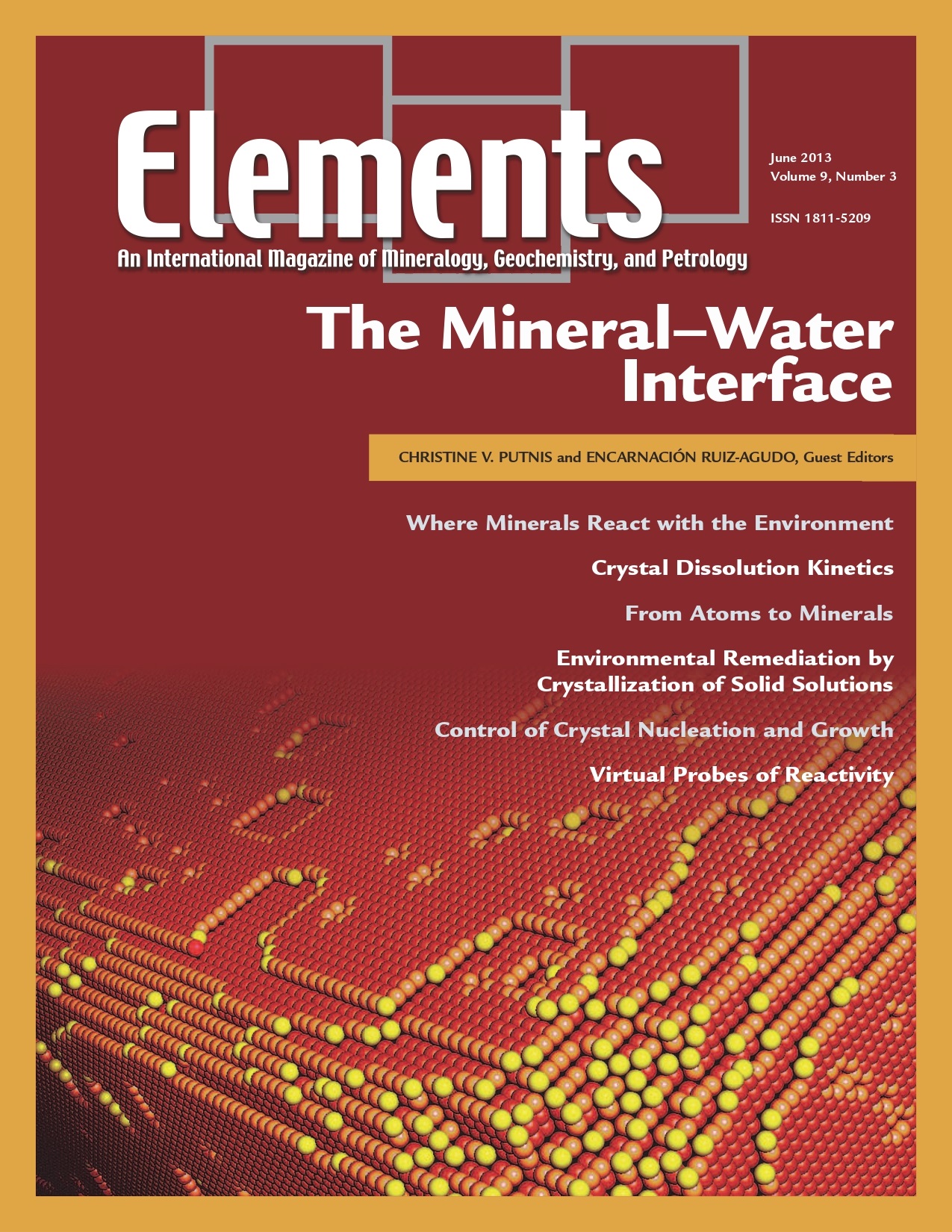
Granitic Pegmatites, August 2012, Vol. 8, No. 4
June 28, 2024
Kaolin, June 2014, Vol. 10, No. 3
June 28, 2024The Mineral–Water Interface, June 2013, Vol. 9, No. 3
$20.00
Reactions occurring at mineral–water interfaces are central to geochemical processes. They affect a wide range of important environmental issues, such as the composition of natural waters, weathering and soil formation, element cycling, biomineralization (including minor-element incorporation), acid mine drainage, and nuclear waste disposal.
The Mineral–Water Interface
June 2013, Vol. 9, No. 3
Reactions occurring at mineral–water interfaces are central to geochemical processes. They affect a wide range of important environmental issues, such as the composition of natural waters, weathering and soil formation, element cycling, biomineralization (including minor-element incorporation), acid mine drainage, and nuclear waste disposal. Recent studies using state-of-the-art spectroscopic and microscopic techniques have characterized the molecular structure of mineral surfaces, the distribution of fluids near surfaces, and dynamic processes such as dissolution, growth, and mineral replacement. These studies provide insights into the kinetics and mechanisms of reactions occurring at mineral surfaces, and they test the validity of predictions based on theory. These recent advances constitute the central theme of this issue of Elements. Modeling approaches used in mechanistic studies are also introduced. Such approaches complement direct, in situ, molecular-scale observations of processes occurring at mineral–water interfaces.
Why You’ll Love Elements Magazine:
- Expert Contributors: Articles written by renowned researchers in the field of geoscience.
- Engaging Content: Join a community of readers who are passionate about Elements.
- Exceptional Quality: Each issue is printed on high-quality paper with stunning visuals and detailed illustrations that bring complex scientific concepts to life.
Order your copy of the June 2013 issue of Elements magazine today and investigate the mineral-water interface.
Related products
-
Diamonds, March 2005, Vol. 1, No. 2
$20.00Diamond, the fascinating ultrahard mineral, is the focus of considerable interest and scientific research. Recent advances particularly relevant to geoscientists include: diamond as a recorder of Earth processes from the perspective of inclusions, chemistry, and conditions of formation; synthesis for research applications and processing to modify color and physical properties, important to diamond gems and anvils; the implications of nanodiamonds from meteorites.
-
Nanogeoscience, December 2008, Vol. 4, No. 6
$20.00At first glance, nano and Earth seem about as far apart as one can imagine. Nanogeoscience seems to be a word connecting opposites.
-
Carbon Dioxide Sequestration, October 2008, Vol. 4, No. 5
$20.00Storage of carbon in the subsurface involves introduction of supercritical CO2 into rock formations beneath the surface of the Earth, typically at depths of 1000 to 4000 meters. Although CO2 is a relatively benign substance, the volume being considered is large.




